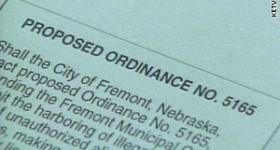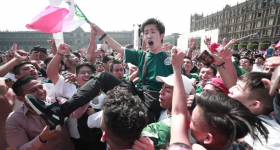Originally posted at New America Media
by Sandip Roy
Jyotirmoy Kumar Dey and Chauncey Bailey probably did not know each other. One covered the underworld of gangs in Mumbai. The other covered the black community in Oakland, CA But their lives followed tragic parallel trajectories.
Dey was gunned down in the middle of the afternoon this past Saturday near a shopping complex in Mumbai. Police blame organized criminals for the murder. Dey, an investigative reporter for Mid-Day, an Indian tabloid, had done reports on his state’s oil mafia, which had burnt a government worker alive in January when the man tried to report on a fuel theft. Dey was working on a series on underworld kingpin Dawood Ibrahim.
Bailey was killed on his way to work at 7 am in August 2007, shot as he was getting into his car. The editor of a black paper, the Oakland Post, he was digging into a story about the financial woes of a local African American community organization with a lot of political clout.
Last Friday, a California court convicted Yusuf Bey IV, the head of that community organization, Your Black Muslim Bakery, of ordering the killing. The motive: to end Bailey’s investigation. The bakery had been founded by Bey’s father more than four decades ago to empower the local African American community, but over the years had allegedly become embroiled in shady deals, trafficking of women and other rackets.
At a time when the media spotlight is often on the foreign journalist who is arrested and thrown into a prison in Iran or North Korea, Bailey and Dey’s murders underline a simple and harsh truth.
The most dangerous place for a journalist is often at home.
“What he did know, killed him,” wrote journalist Emil Guillermo after Bailey’s death. “90 to 95 percent of the cases we take up do not involve foreign correspondents,” Joel Simon, executive director of the Committee to Protect Journalists (CPJ) told New America Now radio in 2009. “They involve local journalists working within their own countries, they involve journalists who cannot pick up and leave, who don’t have an embassy or diplomatic service to stick up for them.”
Saleem Shahzad certainly did not. His colleagues think Pakistan’s own intelligence agency, the ISI, might be behind his death, a charge the agency calls “baseless.” The 40-year-old journalist was killed on May 31, his battered body found in a canal. Shahzad had reported on how Al-Qaeda had infiltrated Pakistan’s navy. He had complained about being threatened by the ISI. “We don’t have any hope that we’ll find out who killed Shahzad,” Amin Yousuf, the secretary-general of the Pakistan Federal Union of Journalists, told the Los Angeles Times. “But we will do what we can to get at the truth.”
Shahzad, Bailey and Dey made news because they paid the ultimate price for crossing what Shahzad’s colleague, investigative journalist Umar Cheema, calls “the red line.”
But their stories, along with those of Turkey’s Hrat Dink and Russia’s Anna Politkovskaya, are just the tip of the iceberg.
Hundreds of their colleagues face those same risks and threats every day even if their copy doesn’t always end in a hail of bullets. As ordinary journalists on their daily beat, with no flak jackets or armed bodyguards, they are perhaps even more exposed and vulnerable than their counterparts in war zones. Even within war zones, the vast majority of journalists who are killed are local journalists covering the conflict in their own home country.
At a 2008 roundtable in Los Angeles, immigrant journalists in the United States talked about the dangers of reporting on what they knew best -- their own community. Tom Byun of the Korea Times received a letter warning him his fingers would be cut off if he kept covering Korean organized crime in Los Angeles’ Koreatown.
Hassina Leelarathne of the Sri Lanka Express in California found death threats and sexually explicit messages on her answering machine because of a stray comment about the Sri Lankan Prime Minister’s wife’s rude behavior on a visit to the United States.
More recently, Umar Cheema told the Los Angeles Times how he was kidnapped, blindfolded, stripped and beaten with a leather strap and a wooden rod in a safe house outside Islamabad by men in police commando uniforms.
Shocking as these stories are, what’s even more shocking is that in most cases the killers get away with the murders. “According to our information, in more than 85 percent of the cases when journalists are killed, no one is ever successfully prosecuted,” said Abi Wright, CPJ’s communications director, after the death of Chauncey Bailey.
The guilty verdict in the Bailey case is, in that sense, both an anomaly and a sliver of hope.
But it did not come about by accident. New America Media, a Bay Area organization that worked with ethnic media and which Bailey had helped found, brought together shocked reporters from many of the Bay Area’s media outlets, some mainstream, some alternative, some big newsrooms, some tiny living-room operations. For several years, these journalists, normally fierce rivals in a tight media market, pooled together their resources and skills, to create something larger than any of their own newsrooms -- the Chauncey Bailey Project. It was really a manifestation of their resolve to not let his death just end in a flurry of bouquets and platitudes.
“I believe this will be the most important work any of us have ever done and ever will do,” said Pete Wevurski, managing editor of the Bay Area News Group-East Bay, one of the media involved in the project.
Together, they took on Bailey’s unfinished work and his murder. The stories they broke eventually helped put together the jigsaw that brought down the bakery and indicted not just the 19-year-old who pulled the trigger but also the man who ordered the killing.
“From the beginning, the Chauncey Bailey Project wanted to send the message that when a journalist is killed because of their work, other journalists will step forward and make sure there is accountability,” wrote Robert Rosenthal on the investigative reporting site California Watch after the verdict.
Could Mumbai’s vibrant, diverse and large media community do the same for Jyotirmoy Kumar Dey? There could probably be no better tribute to their fallen colleague than that.
Sandip Roy is on leave as an editor with New America Media in San Francisco and is currently the culture editor with FirstPost.com in Calcutta.









Comments